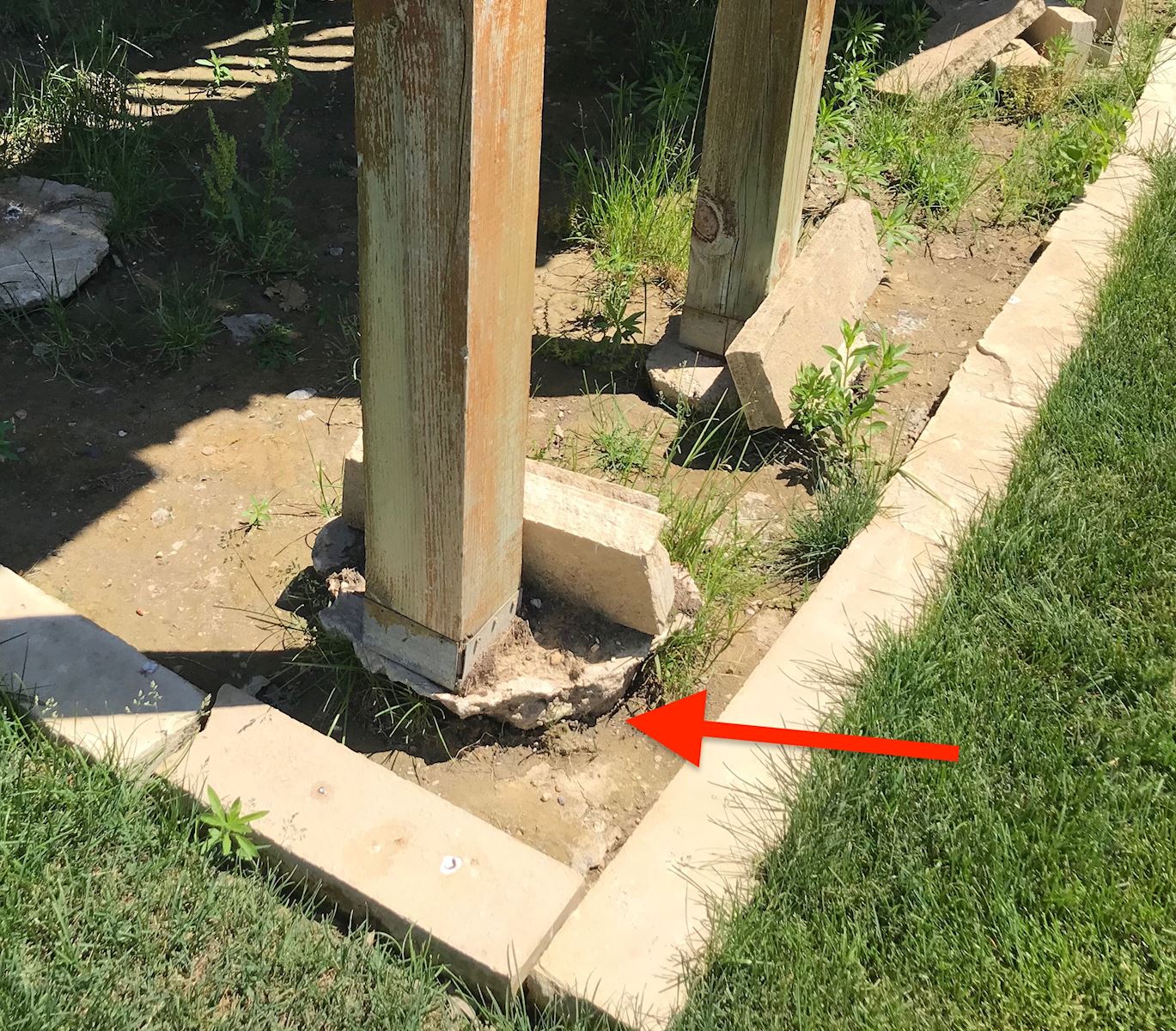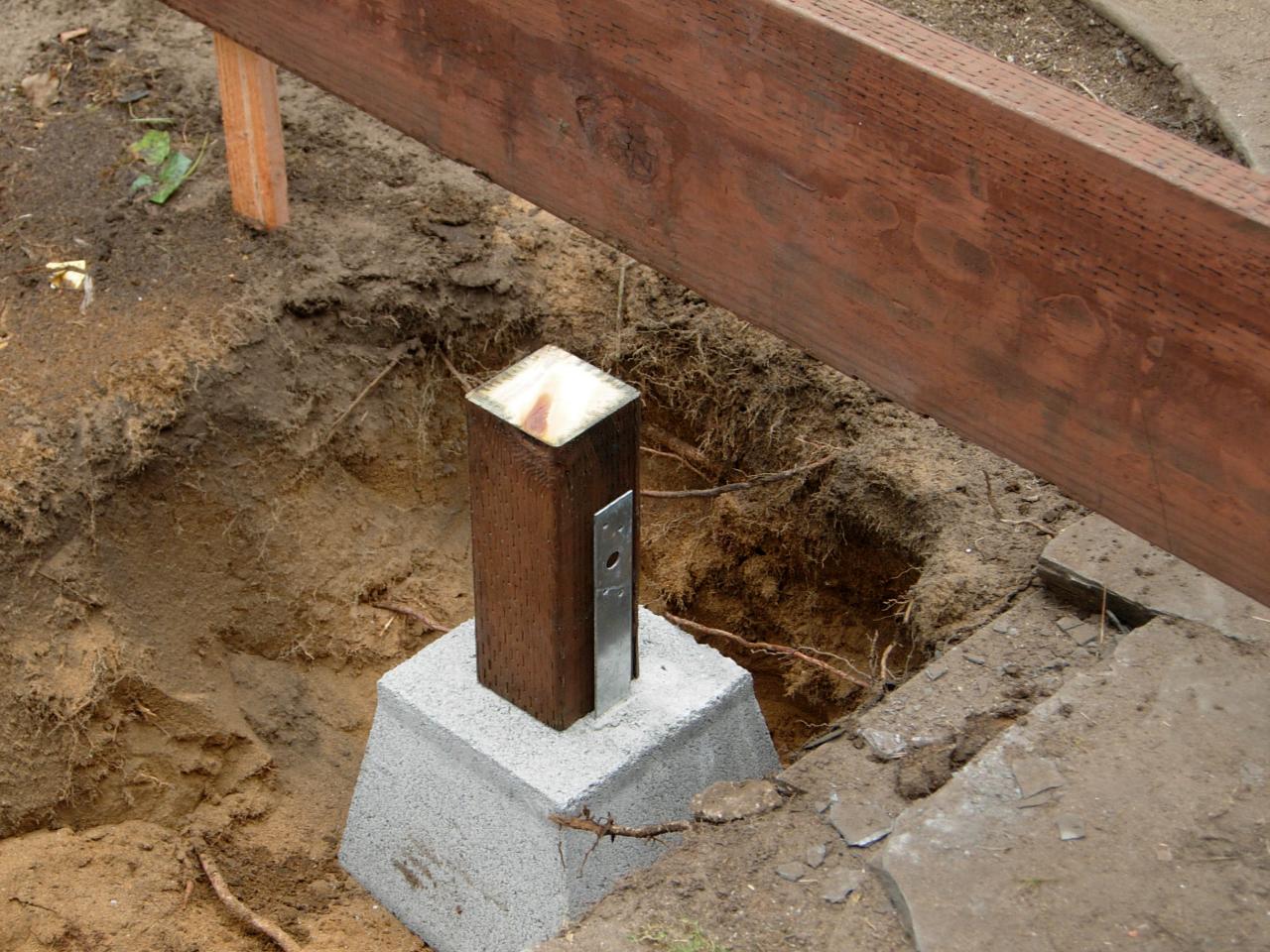A Strong Foundation for Your Oasis: Discovering the Importance of Deck Footings in Outdoor Structures
Choosing the Right Deck Footings for Stability and Sturdiness
The longevity and safety and security of your deck depend heavily on the type of grounds you choose, as they give the necessary support and stability to withstand the examination of time. In this discussion, we will certainly explore the numerous kinds of deck footings, consider the important aspects to consider when making a choice, and delve right into the pros and cons of different choices.
Kinds Of Deck Grounds
These grounds consist of a round hole loaded with concrete, which provides a solid structure for the deck blog posts. Concrete pier grounds are relatively simple to install and provide outstanding stability, making them a prominent option for several deck tasks.
An additional sort of ground is the helical stack footing. Helical stacks are steel shafts with helical plates affixed to them. These footings are mounted by screwing them right into the ground, which develops a protected foundation for the deck. Helical stack footings are perfect for locations with tough dirt problems, as they can be installed in almost any kind of kind of dirt. If required., they likewise allow for very easy modification and leveling of the deck.
Conversely, some building contractors select precast concrete grounds. These footings are made from sturdy concrete and can be found in different sizes and shapes to suit various deck designs. Precast concrete grounds are hassle-free to mount and offer a stable base for the deck framework.
Ultimately, another choice is the post-in-anchor ground system. This kind of footing includes driving a steel anchor right into the ground and affixing it to the deck blog post. It provides versatility in regards to placing the deck posts and appropriates for decks with light-weight frameworks.
When choosing the ideal kind of deck ground, it is important to think about aspects such as soil problems, deck tons, and local building ordinance (Deck Footings). Consulting with a specialist specialist or architectural designer can help make certain the proper footing is selected for a safe and secure deck
Aspects to Consider When Picking Grounds
When selecting the suitable grounds for a deck, it is crucial to very carefully take into consideration numerous factors such as soil conditions, deck tons, and adherence to regional structure codes. These elements play a substantial duty in ensuring the stability and longevity of the deck framework.
Among the primary elements to consider is the soil conditions. The sort of dirt on which the deck will be constructed figures out the sort of grounds called for. Decks constructed on sandy or loosened soils may need much deeper footings to provide adequate assistance and protect against settling. On the various other hand, decks developed on clay or extensive soils may require grounds that can suit the dirt's propensity to broaden and contract.
Another vital aspect is the deck tons. The weight of the deck, consisting of the products used and any type of potential online loads such as furniture or celebrations, must be thought about when choosing footings. The footings have to be created to bear the weight of the deck and distribute it uniformly to stop any architectural Click Here problems or failures.
Finally, adherence to local structure codes is vital. Building regulations differ from region to area, and it is crucial to abide by the specific demands set by the neighborhood authorities. Deck Footings. These codes ensure that the deck is constructed securely and meets the essential requirements for architectural honesty and load-bearing capacity
Concrete Footings: Pros and Cons

Concrete footings provide a number of benefits and drawbacks when used as the foundation for a deck. On the favorable side, concrete grounds give excellent stability and sturdiness.
An additional benefit of concrete grounds is their convenience. They can be put right into various sizes and shapes to fit numerous deck designs and setups. Concrete footings can be personalized to fit the details demands and demands of the deck structure.
Nevertheless, there are also some drawbacks to utilizing concrete grounds. One major drawback is the cost and labor involved in their installment. Concrete grounds call for excavation and frequently need the assistance of hefty equipment. This can enhance the overall cost of the deck task and may require specialist help.

Helical Piers Vs. Sonotubes: Which Is Better?
In considering the foundation options for a deck, the comparison between helical piers and sonotubes is important in figuring out the remarkable option. They are turned right into the ground utilizing hydraulic machinery, providing a long lasting and steady foundation for the deck.
When it pertains to stability and resilience, helical piers have the upper hand. Your Domain Name The helical plates on the piers develop a strong grip with the dirt, moving or avoiding any type of motion of the deck. This is especially valuable in locations with unstable or changing soil conditions. Sonotubes, on the various other hand, depend solely on the concrete loading for stability, which might not provide the same level of stamina and resistance.
In regards to installation, helical piers are reasonably simpler and faster to mount compared to sonotubes. The hydraulic machinery used to twist the piers right into the ground guarantees a fast and efficient procedure. Sonotubes, on the other hand, need excavating holes and pouring concrete, which can be taxing and labor-intensive.
Furthermore, helical piers are an even more flexible option. They can be used in numerous dirt problems and can be readjusted or strengthened if required. Sonotubes, on the various other hand, may require added assistance, such as rebar, in particular soil conditions or areas with high tons needs.
Selecting the Right Footings for Your Deck's Dimensions
For ideal architectural stability, it is necessary to carefully choose the proper grounds that straighten with the measurements of your deck. The measurements of your deck, including its elevation, size, and size, play a significant role in figuring out the kind and dimension of grounds called for.
When selecting footings for your deck, it is essential to take into consideration the load-bearing capability of the soil. The weight of the deck, combined with the weight of any kind of furniture or people on it, puts in a considerable force on the footings (Deck Footings). It is important to select footings that can adequately sustain this weight without sinking or changing over time.
Larger decks with better dimensions require bigger footings to give adequate security and support. The form of the footings, whether they are round or square, depends on the design and format of the deck.
Final Thought
In verdict, picking the ideal deck footings is crucial for ensuring stability and sturdiness. Factors such as the kind of footings, the deck's measurements, and the pros and disadvantages of various important source alternatives need to be taken into consideration.
These grounds consist of a round opening filled with concrete, which offers a solid foundation for the deck messages. Concrete pier footings are reasonably very easy to mount and use exceptional security, making them a preferred option for several deck tasks.
Precast concrete grounds are practical to install and offer a stable base for the deck framework.
It supplies flexibility in terms of placing the deck posts and is suitable for decks with light-weight structures.
Concrete footings use several advantages and negative aspects when utilized as the foundation for a deck.